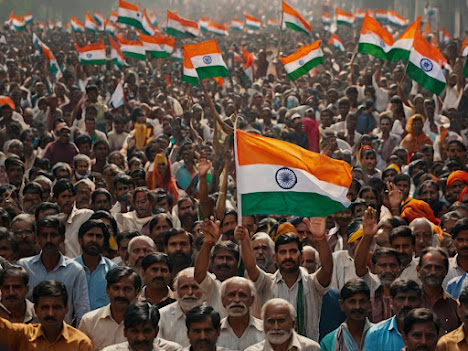India, a land of vibrant cultures and bustling cities, also boasts some of the most extraordinary wildlife sanctuaries. From majestic Bengal tigers to the elusive snow leopard, India's national parks offer unforgettable experiences for nature enthusiasts. Whether you’re a backpacker, a digital nomad, or a family seeking adventure, here are the top six wildlife destinations in India that promise thrilling encounters with nature's finest.
1. Kaziranga National Park, Assam: Rhino Paradise
On the floodplains of the Brahmaputra River lies Kaziranga National Park, a UNESCO World Heritage site and a haven for the greater one-horned rhinoceros. Home to nearly two-thirds of the world’s rhino population, Kaziranga is also a sanctuary for tigers, elephants, and river dolphins.
For the Backpackers: Embark on a thrilling elephant-back safari to see rhinos up close. Stay in affordable guesthouses and enjoy the rustic charm of Assam.
For Digital Nomads: Capture the park’s biodiversity with your camera. With plenty of quiet spots, it’s an ideal place to work remotely while immersed in nature.
For Families: Discover the park’s rich wildlife on guided tours. Children will be fascinated by the rhinos and playful river dolphins.
Fun Fact: Kaziranga is one of the last areas in eastern India largely untouched by human activity, providing a pristine environment for its inhabitants.
Know Before You Go: The park is closed from June to September due to the monsoon season. Visit between November and March for the best wildlife sightings.
2. Hemis National Park, Jammu and Kashmir: High-Altitude Adventure
High in the Himalayas, Hemis National Park is a year-round spectacle of rugged beauty. Known for its snow leopards, this park offers a stark, breathtaking landscape that’s especially stunning in winter.
For the Backpackers: Trek through the park’s alpine tundra to spot the elusive snow leopard. The high-altitude trails are challenging but rewarding.
For Digital Nomads: Work from Leh and take weekend treks into the park. The stark beauty and solitude will rejuvenate your mind.
For Families: Introduce older kids to high-altitude trekking. Winter visits offer the best chance to see snow leopards.
Fun Fact: The park’s snow leopards are often referred to as “gray ghosts” due to their elusive nature.
Know Before You Go: Visit from January to March for the best chance to see snow leopards. Allow time to acclimatize to Leh’s high altitude.
3. Nagarahole National Park, Karnataka: Jungle Safari Awaits!
Nagarahole National Park, also known as Rajiv Gandhi National Park, is a lush paradise nestled in Karnataka. The park's fragrant sandalwood and teak trees, thick groves of bamboo, and winding streams create a perfect habitat for a variety of wildlife. It's a premier destination for spotting Bengal tigers and leopards, often seen during jeep safaris.
For the Backpackers: Embrace the thrill of a jeep safari to catch a glimpse of big cats or take a serene coracle ride along the Kabini River, perfect for viewing aquatic birds and elephants.
For Digital Nomads: Enjoy the tranquility of the park while capturing stunning photos of its rich flora and fauna. Stay connected with nature and your work, thanks to the park’s serene environment.
For Families: Combine your visit with trips to nearby Mysore and Karnataka’s beautiful beaches. Explore the park’s diverse wildlife while creating memorable family adventures.
Fun Fact: Nagarahole is renowned for its leopard sightings, making it one of the best national parks globally for these elusive big cats.
Know Before You Go: The park is open year-round but may close during the monsoon season in July and August. Plan your visit from October to February for the best experience.
4. Keoladeo National Park, Rajasthan: Birdwatcher’s Haven
Once a royal duck-hunting ground, Keoladeo National Park is now a UNESCO World Heritage site renowned for its bird diversity. This compact park between Jaipur and Agra is a critical habitat for migratory birds along the Central Asian flyway.
For the Backpackers: Explore the park on foot or by bicycle, keeping your eyes peeled for painted storks and sarus cranes.
For Digital Nomads: Set up your mobile office amidst the park’s peaceful wetlands. Birdwatching breaks will inspire your creativity.
For Families: Introduce your children to birdwatching. The park’s easy accessibility and rich avian life make it a great educational trip.
Fun Fact: Keoladeo hosts migratory waterfowl from China, Afghanistan, Turkmenistan, and Siberia, making it a global birdwatching hotspot.
Know Before You Go: Most visitors arrive via the two-hour drive from Agra. The best time to visit is from October to February.
5. Satpura National Park, Madhya Pradesh: Photographer’s Delight
Satpura National Park’s picturesque landscapes, from grasslands to canyons, offer a photographer’s paradise. Home to leopards, sloth bears, and a variety of deer species, it’s a tranquil escape in central India.
For the Backpackers: Enjoy safaris by jeep, motorboat, or even on foot. Affordable stays in nearby villages add to the adventure.
For Digital Nomads: The park’s serene environment is perfect for working remotely. Capture stunning shots of the park’s diverse wildlife and landscapes.
For Families: Safari options cater to all ages. Kids will love spotting deer and other animals in their natural habitat.
Fun Fact: Satpura is known for its diverse antelope and deer species, including the diminutive Indian muntjac and the splendidly antlered sambar.
Know Before You Go: The best time to visit is from November to February. The nearest airport is in Bhopal, with road access from Jabalpur and Nagpur.
6. Mahatma Gandhi Marine National Park, Andaman Islands: Underwater Wonderland
For the Backpackers: Snorkel and dive to explore the coral reefs. Budget-friendly stays on the islands offer a remote getaway.
For Digital Nomads: Enjoy working from a tropical paradise. Stay connected while taking breaks to explore the marine wonders.
For Families: Kids will love snorkeling and seeing colorful fish and corals. The islands offer safe, family-friendly adventures.
Fun Fact: More than 560 coral species have been identified around Jolly Buoy and Red Skin islands.
Know Before You Go: The best time to visit is from October to February. Activities are limited during the monsoon season from June to August.






